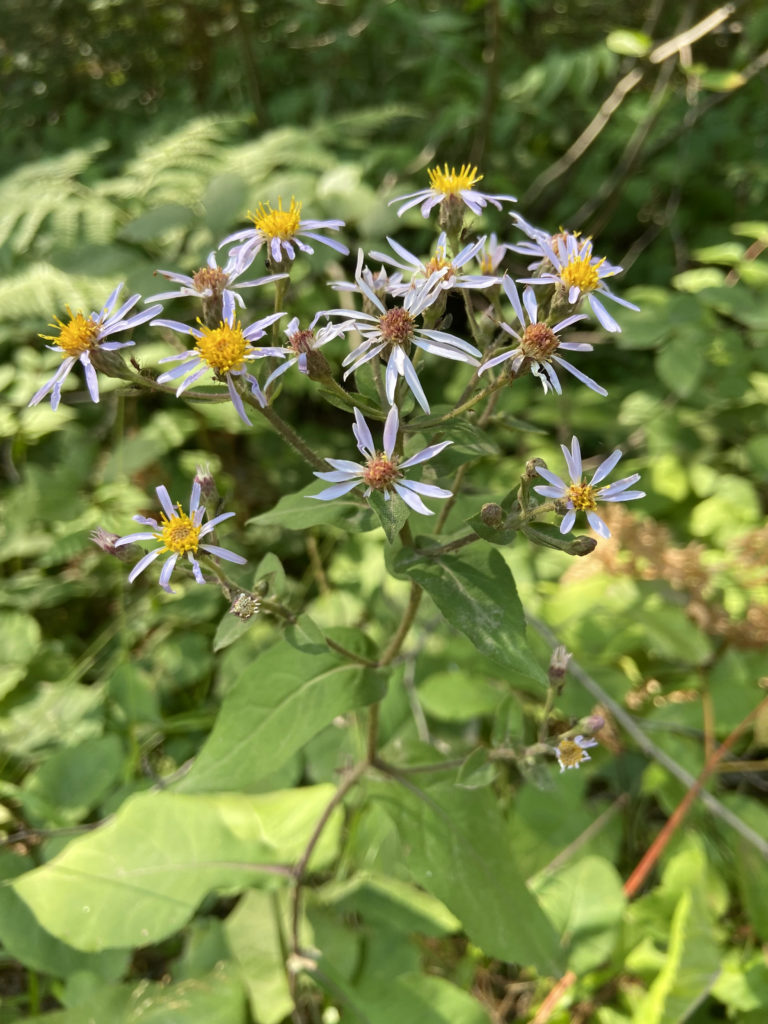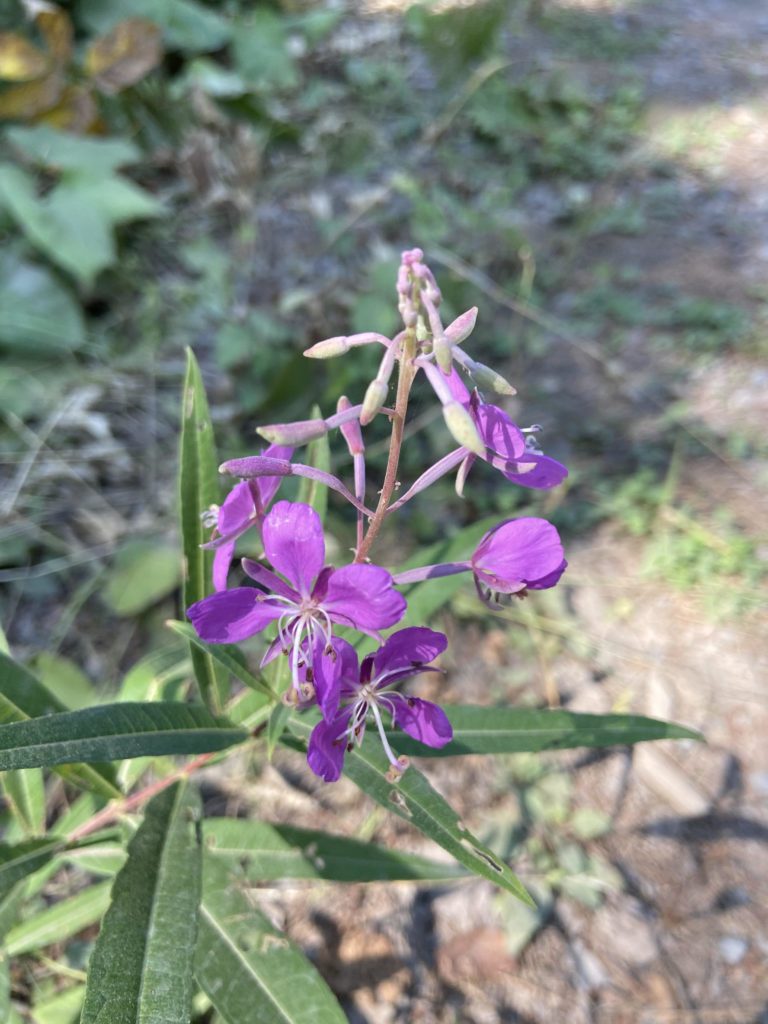8/11/21 – As late summer quickly approaches, many changes are happening with the flora around Sawbill. One of these changes is a shift in which wildflowers are blooming. Late spring and early summer bring spring ephemerals — small, delicate flowers that typically bloom close to the forest floor. As the summer progresses, taller flowers, ferns, and other undergrowth shade these small plants. Late summer wildflowers are typically taller and showier than early summer flowers. They often bloom on long, sturdy stalks, with a cluster of many flowers together on the same stem.

Even though the peak wildflower season (June to early July) has passed, there are still many flowers blooming around Sawbill and on the edges of the Sawbill trail. The most common bloom right now is the large leaf aster, which produces clusters of light purple flowers with yellow or brown centers. The large leaf aster is a common plant in Northern Minnesota, with large, fuzzy, heart shaped leaves carpeting the forest floor. Although many people are familiar with these common leaves, they often don’t realize that the lavender flowers come from the same plant.

Other common flowers around Sawbill are common yarrow (white flower clusters with feathery leaves), fireweed (tall spikes of pink flowers), goldenrod (fluffy spikes of yellow flowers), and creeping bellflower (many purple bell-shaped flowers on a tall stalk). Other blooms include black-eyed Susan, ox-eye daisies, and Joe Pye weed. While some plants are still blooming, others have already started producing fruits. These include bunchberries (a cluster of red berries in the middle of four to six leaves), raspberries and blueberries.
-Robin
